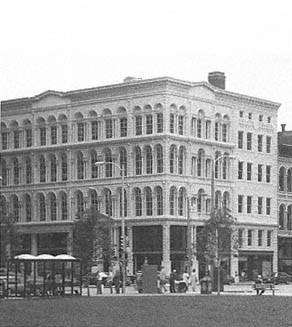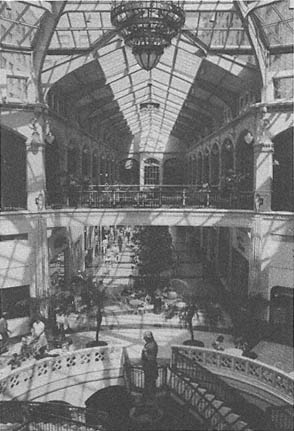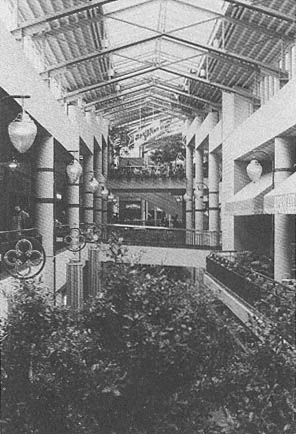Architectural and Urban Character
There is a tendency to think of retail design in relation to suburban precedents; urban architecture, however, should be more sensitive than this. The revitalization of downtown requires architecture appropriate to the downtown, not contrived atmosphere or generic design. "There's no rationale behind a suburban transplant in the central city," says Stephen Dragos. "It won't work." To compete successfully and attract additional investment, a downtown center "has to be something that uplifts the spirit, that's superior to everything else in the surrounding area. That was our objective, so we had to get the best."[12]
The architecture of the historical center city can be differentiated from that of the suburbs through historicizing motifs. But too often these motifs are no more than pastiche. A more sympathetic response to historical architecture can be achieved by understanding its principles. For example, in the Grand Avenue the shape of the cross section is tighter

41.
Iron Block, built in 1860 (refurbished in 1984).
George H. Johnson, architect.

42.
Interior of the Plankinton Arcade, whose refurbishment
was part of the Grand Avenue development.
Refurbishment architects: ELS / Elbasani and Logan, 1983.

43.
Arcade in a new portion of the Grand Avenue.
ELS / Elbasani and Logan, architects, 1983.
and more vertical—more intensive and classically urban—than that of suburban malls.
Other elements, in concert with this intense vertical cross section, contribute to a sense of urbanity: the colonnade at the edge of the balcony lends a sense of intimacy different from the vacuousness of typical mall spaces. The pitched skylights are reminiscent of nineteenth-century skylights and give a strong sense of daylighted interior space. More specific period references are found at a smaller scale: sconces and Tivoli lights, for example.
In relation to this concern for responding to the existing architectural and urban character of downtown, the most questionable decision at the Grand Avenue was the closing of Third Street. Did this disrupt traffic in and violate the perceptions of downtown? There is no evidence that the street closure has impeded the flow of traffic, and the closure does not hamper the movement of pedestrians. In fact, it invites pedestrians, for this is the principal entrance to the Grand Avenue. Although this modification in street pattern seems not to have been excessive, violations of
the character of an existing setting remain a concern in any project that begins to restructure downtown in dramatic ways.